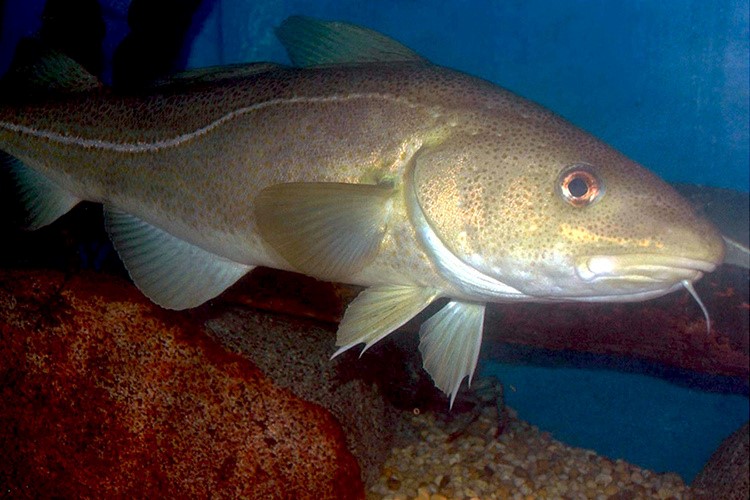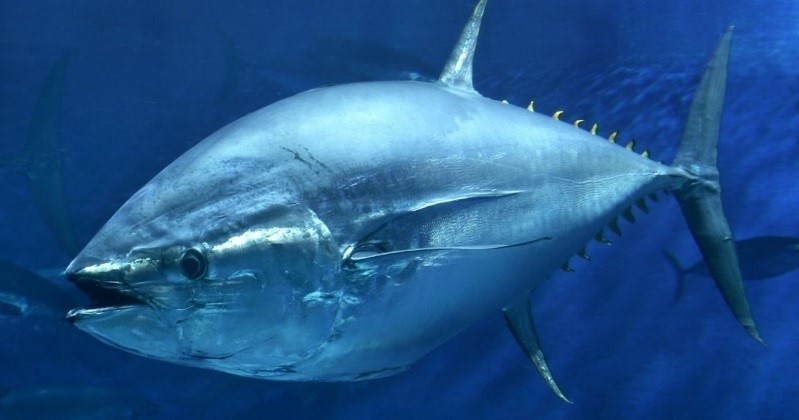Dr. Amina Schartup’s research focuses on many important issues to both marine and human health, including methylmercury concentration in fish. Read on to learn more about Dr. Schartup’s research.

This post is in support of #BlackInMarineScience week highlighting Black scientists who have contributed to and are currently working in the marine science field. To find out more visit https://blackinmarsci.github.io/index.html.
Meet Dr. Amina Schartup
The Schartup Biogeochemistry Lab is led by Dr. Amina Schartup, an assistant Professor at Scripps Institute of Oceanography in San Diego, California. Dr. Schartup received a B.Sc. in Chemistry from University of Paris V, a M.Sc. in Geochemistry from University of Paris VII/IPGP, and her PhD in Oceanography from the University of Connecticut. Before starting at Scripps, Dr. Schartup worked as a Research Associate at the Harvard School of Engineering and Applied Sciences and Public Health. Not only does Dr. Amina Schartup have extensive and varied experience in the field of biogeochemistry but was also an American Association for the Advancement of Science (AAAS) Science and Technology fellow. During her time as a Science and Technology fellow, she helped produce a document for federal guidance on ethical research in the Arctic. The document helps outline expected behavior and conduct in the Arctic including interactions with indigenous cultures and environmental stewardship.
The Schartup Biogeochemistry Lab
The Schartup Lab has three current projects, primarily focusing on methylmercury and trace metal. One project measures methylmercury in the water column to help determine why a form of mercury (monomethylmercury) is found in high levels in Arctic organisms. Another measures methylmercury production and accumulation in seawater. In a recent paper from 2019, Schartup and co-authors look at the effects of increasing temperatures, changing emissions regulations, and overfishing on several important Atlantic fisheries.
What’s methylmercury got to do with it?
Methylmercury is a toxin that damages nerve tissue (or a neurotoxin). Mercury can be released into the atmosphere from industrial sources on land or from fuel combustion. Once in the atmosphere, mercury rains out onto land or water, which eventually runs-off into the ocean. While in the ocean, certain bacteria can convert mercury into its more bioavailable toxic form, methylmercury.
Methylmercury bioaccumulates up the food chain. It is first consumed by small microscopic photosynthesizers known as phytoplankton, which are eaten by larger organisms and so on. Large apex predators at the top of the food chain (like tuna) have the highest concentration of methylmercury in their tissues. These apex predators make up our global fisheries world-wide, and as a result we eat fish with high concentrations of methylmercury. In fact, approximately 82% of methylmercury exposure in the U.S. is from eating seafood. For a more detailed explanation on how mercury gets into our seafood check out this recent post by Patricia Meyers.
Because we are aware of the health effects of methylmercury exposure, including cognitive and motor disfunction, many global environmental regulations aim to reduced mercury pollution. However, there is still little to no data on the effects of increasing temperatures or overfishing on mercury accumulation in the fish we eat. Dr. Amina Schartup and co-authors set out to determine future methylmercury concentration in the tissue of some of the biggest fisheries in the North Atlantic.

How did scientists look at methylmercury in fish?
Schartup and other scientists focused on fisheries in the Gulf of Maine, where some of the oldest fisheries in the U.S. (~ 200 years old) and highest temperature anomalies are found. Here, scientists focused on three fisheries: Atlantic cod, Atlantic spiny dogfish, and Atlantic bluefin tuna.
Both the Atlantic cod and spiny dogfish have changed their diet because their usual prey, herring, is overfished in the Gulf of Maine. Scientists counted and identified the stomach contents of fish from each species, then modeled methylmercury concentration in their tissue. Models were based on 30 years of previous studies and measurements made during this project.
Not only has overfishing changed the diets of many important fisheries, regulation changes have impacted the concentration of methylmercury in seawater. Regulations on mercury pollution especially from coal processing plants resulted in a decrease in methylmercury from 1990-2000. However, the impacts of this decrease in seawater methylmercury on bioaccumulation in large apex predators was previously understudied.
Methylmercury tissue accumulation in Atlantic cod and spiny dogfish were modeled with three scenarios: 1) a 1ºC temperature increase; 2) a shift in diet due to overfishing; and 3) a 20% decrease in methylmercury in seawater. Methylmercury tissue concentration in Atlantic bluefin tuna was modeled with solely the temperature increase and drop in methylmercury.
What does this mean for future oceans?
Scientists found Atlantic cod and spiny dogfish reacted differently to the three stressors. In Atlantic cod, methylmercury concentration increased with a temperature increase of 1ºC, but the concentration decreased with changes in diet and methylmercury concentration in seawater. In contrast, methylmercury concentration in spiny dogfish showed the opposite trends, and methylmercury concentration increased when dogfish were faced with all three stressors combined.
The model for Atlantic bluefin tuna showed lower methylmercury concentrations by the 1990s, around the same time period water temperatures were particularly low in the Gulf of Maine. With continued warming, however, the model predicted an increasing methylmercury concentration, with a total increase of 30% from 2015-2030. Schartup and colleagues emphasized the importance of measuring these changes across each fishery, especially given the differences between Atlantic cod and spiny dogfish.

What can we do?
These findings demonstrate the affects of climate change on accumulation of toxins, like that of methylmercury, in fisheries. We know temperatures are increasing and mercury is released from run-off and emissions. But how can we help mitigate some of these affects? Regulations aimed at reducing emissions and air pollution from fuel sources (like coal) would drastically reduce the amount of mercury into the atmosphere. Hopefully by making an impact in the amount of mercury released we can help slow down or stop some of the methylmercury accumulation we see in fisheries as a result.
I’m a PhD student in the Rynearson Lab at the University of Rhode Island (URI) Graduate School of Oceanography (GSO). My research interests are focused on human impacts on the oceanic ecosystem, particularly effects on the primary producers (phytoplankton) at the base of the food web. Currently, I work with cultures from regions of the ocean that are nutrient limited and will conduct experiments to investigate how these phytoplankton survive.

